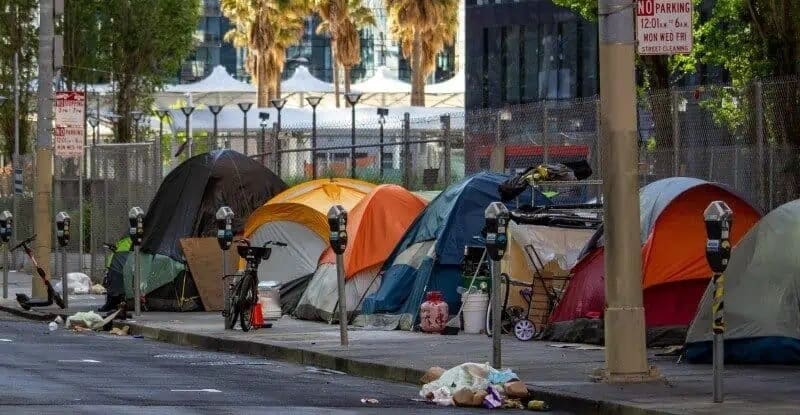Cost to house asylum seekers $9.3M every year in Mississauga and Brampton
Published March 22, 2024 at 4:38 pm

It will cost at least $10 million more in up-front funding and another $9.3 million every year to support the rising number of asylum seekers and refugees in Mississauga and Brampton – money that should come from Ottawa but may end up being covered locally.
Those are the latest figures from the Region of Peel, which says plans for a new asylum claimant reception centre near Toronto Pearson International Airport in Mississauga need even more funding from the feds.
More claimants are turning to shelters after landing in Canada, shelters that the region says are already underfunded and running approximately 350 per cent over capacity.
Two asylum seekers from Africa have died in recent months after sleeping outdoors, and the region is now calling on the federal government to make an annual funding commitment of $62,000 per asylum seeker.
A recent survey showed Ontario is home to the highest number of permanent resident refugees in Canada, sitting at an estimated 39,800 individuals. In September, the Region said refugees made up close to 60 per cent of the shelter population which was around 260 per cent over capacity at the time.
Ottawa has committed $7 million in funding for the new asylum claimant welcome centre, but the region says that pledge won’t cover even half the costs required for the facility.
The region says it needs another one-time commitment of $10 million in funding from the federal government to get the centre operational, and another $9.3 annually to keep it running.
Jessica Kwik is the director of the Peel Newcomers Strategy Group, and she says the proposed welcome centre would help streamline a complex settlement process for newcomers.
She says Mississauga and Brampton have seen a surge in the number of asylum claimants “likely due to global conflicts” and economic troubles in a refugee’s country of origin. One significant roadblock newcomers face is dealing with a mountain of paperwork and legal documents, which is another hardship she said the welcome centre could help with.
“That’s where a welcome reception centre would be really valuable – is to bring all those pieces together in a concrete way,” Kwik told Insauga.com.
Brampton Mayor Patrick Brown says the city shelled out $26 million last year to help shelters deal with an influx of claimants. Of that $26 million less than half has been repaid to the city through the federal Interim Housing Assistance Program (IHAP), which has a deadline of March 31.
The mayor says Brampton is on track to spend another $60 million, and is concerned with the costs even if the city is hearing “all the right promises from the government.”
Region of Peel Chair Nando Iannicca says the request for $62,000 annually per asylum claimant and more funding for the welcome centre would shift the region from “a crisis-level response to a more sustainable solution.”
But if the feds don’t come through with more dollars, the Region says it will still move ahead with asylum claimant-focused shelter facilities, meaning the money would need to be found locally to provide the services. That would put even more strain on the region’s homelessness supports, which is already “nearing collapse,” according to Commissioner of Human Services Sean Baird.
“We cannot continue to simply lease additional hotels to provide temporary housing for thousands of asylum seekers,” Baird said.
“A new model is necessary to ensure all levels of government can work together and proper supports can be provided to those who are here and working to establish themselves in Canada, as well as the tens of thousands expected to continue to arrive into the GTHA.”
INsauga's Editorial Standards and Policies








